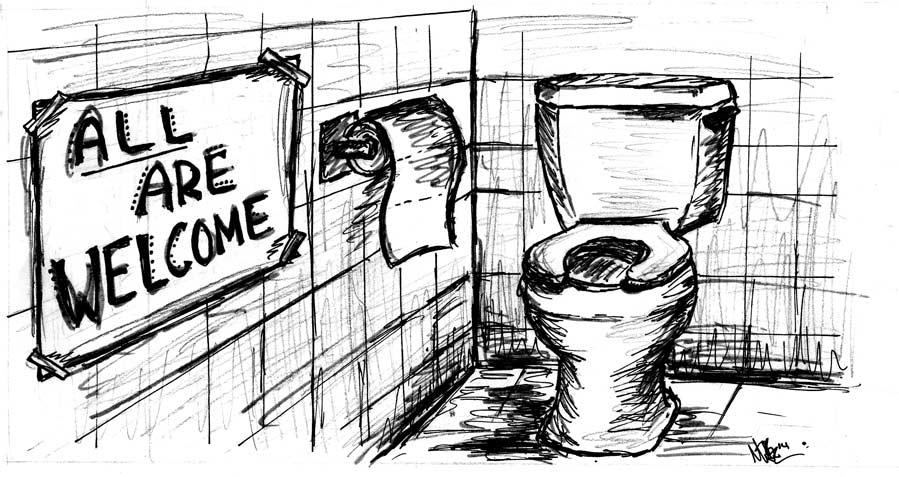
Gender-inclusive washrooms create safe spaces on campus
A new multi-stall and gender-inclusive washroom was approved on campus last week. Gender-inclusive washrooms are bathrooms open to people who identify as any gender. They’re specifically designed to cater to the transgender and gender non-conforming communities.
Gender-segregated washrooms are the norm. When you use a washroom on campus, they’re typically divided into male and female, with stick figure depictions of each gender. For people whose gender identity matches the gender they were assigned at birth — cisgender people — this isn’t a problem.
But for people who don’t identify as either binary gender or for people whose gender identity differs from the gender they were assigned at birth — gender non-conforming and trans people — these gender-segregated washrooms
are unsafe spaces.
When transgender people use segregated washrooms, they are often met with intimidation, harassment or assault. According to the UCLA school of law, almost 10 per cent of transgender people have been sexually or physically assaulted just for using gender-segregated washrooms.
It doesn’t matter whether the people facing this violence are trans, gender non-conforming or cisgendered individuals who present their gender in a way that isn’t considered typical. What does matter is that everyone has the right to be safe at the University of Calgary. Gender-inclusive washrooms are an easy way to accomplish that.
Caring for the health of everyone on campus isn’t a burden. Administration must prove that they value everyone’s presence, and that they care about the health and safety of vulnerable groups.
Policing people’s gender identities is wrong. Anyone should be allowed to use the washroom they believe is most fitting for them. Gender-inclusive washrooms function as intentionally safe spaces designed to include people.
A washroom like this means that trans and gender non-conforming people don’t stand out in ways that make them vulnerable. Everyone is allowed, so there isn’t a need to exclude people based on what you think a man or a woman should look like.
We’ve all probably used gender-inclusive washrooms. In our homes, there aren’t separate washrooms for men and women. There’s no problems with different genders sharing a washroom in private, indicating that it can be done in public.
There’s a tendency to assume that gender-inclusive washrooms are somehow less safe than segregated washrooms. Washrooms on campus are public spaces, but they’re still designed to give people privacy.
When people talk about safety concerns with gender-inclusive washrooms, they’re usually talking about the safety of cisgender women. While this is an important issue, the safety of cisgender women isn’t more important than the safety of the trans and gender non-conforming communities. And a sign on a door won’t keep someone who is genuinely dangerous out of a room.
This gender-inclusive washroom is also an explicit way for the Students’ Union and U of C administration to prove they care about gender and sexual minorities on campus. Rhetoric about being inclusive and caring is important. But backing your words up with resources that improve the quality of people’s lives is what affects marginalized communities. For a group of people already disadvantaged on campus, being told that your needs and concerns as a community are valid is important.
It’s also important this washroom is designed like others on campus. It isn’t single-stall, with a door that locks behind you. The new washroom will have multiple stalls and divided urinals, just like pre-existing bathrooms. It’s an average washroom. The only difference is that it will serve a community that deals with problems in an area of their life that cisgender people probably never think about.
If gender-inclusive washrooms really bother you, your priorities are in the wrong place. Most washrooms on campus are designed to cater to cisgender people. If you have a problem, you don’t have to use this washroom. And if gender-inclusive washrooms bother people, that’s too bad. The right of bigots to feel comfortable isn’t more important than the right of trans and gender nonconforming people to be safe on campus.
Kate Jacobson, Gauntlet Editorial Board
